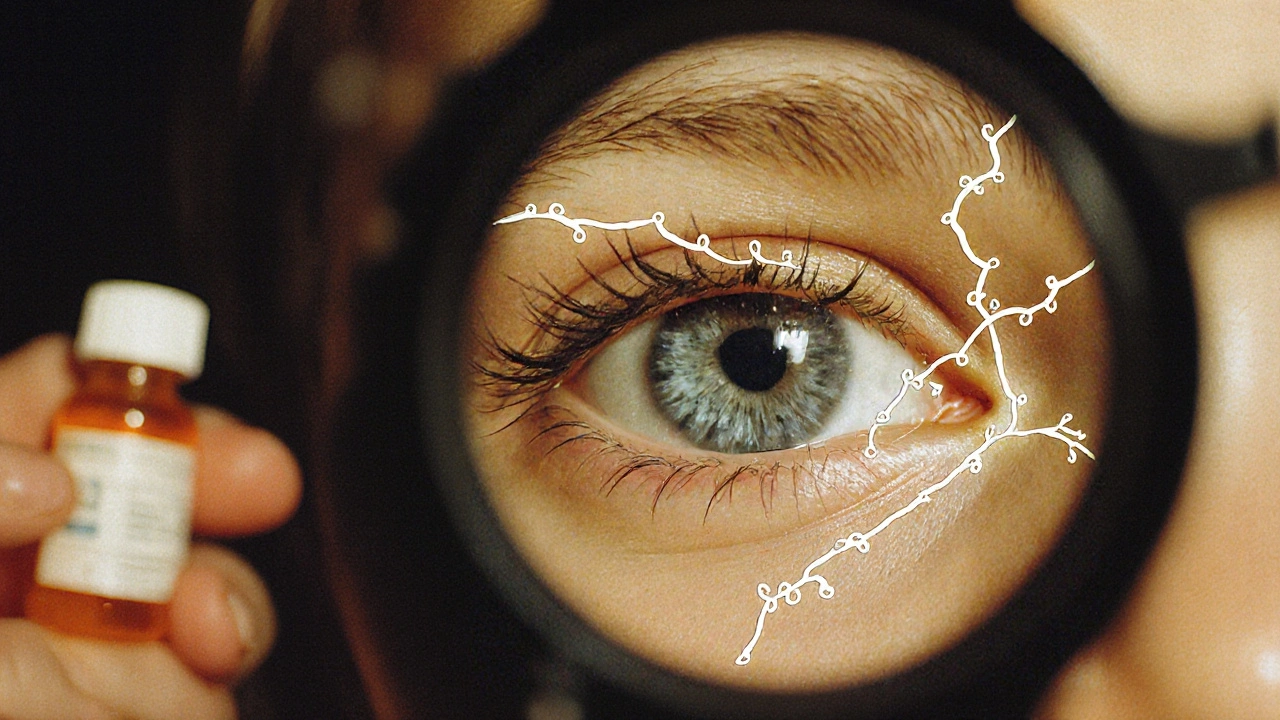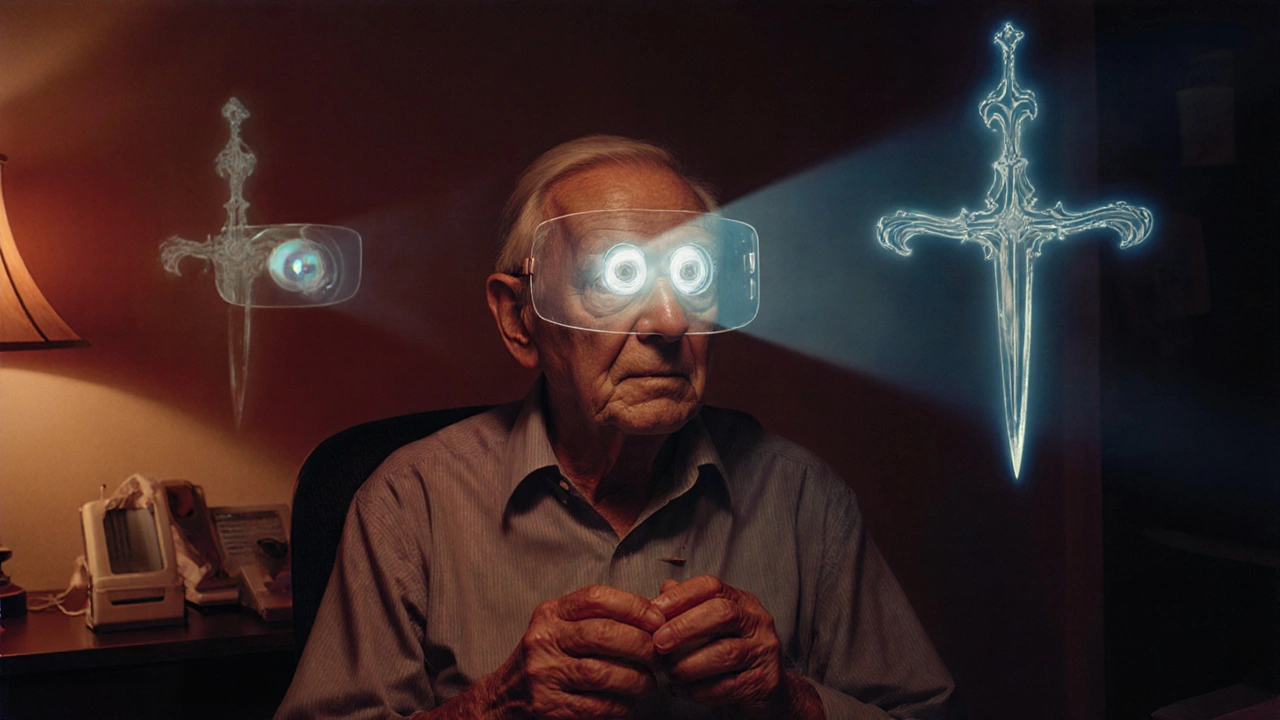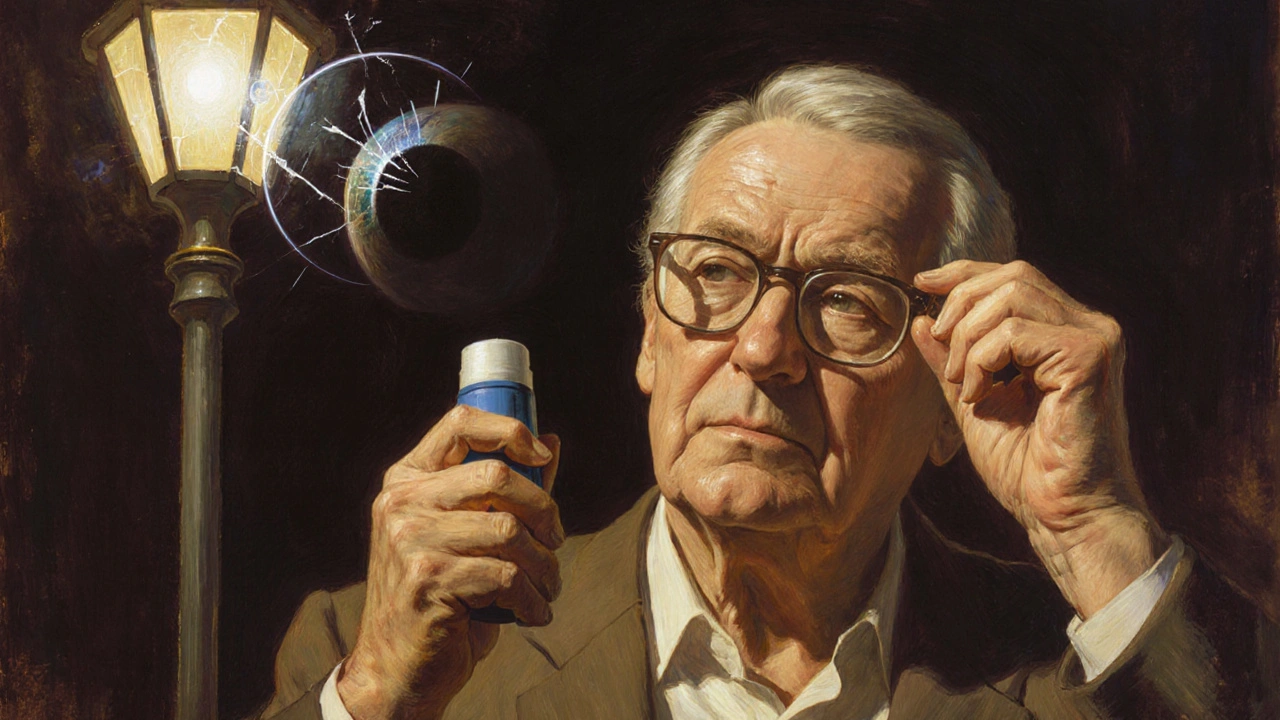Steroid-Induced Cataract Risk Calculator
How to Use This Tool
This calculator helps you understand your risk of developing steroid-induced cataracts. Based on the information you provide, we'll estimate your risk level and recommend next steps. Remember: early detection is critical for preserving your vision.
Your Steroid Treatment
Additional Risk Factors
When you’re taking steroids for a chronic condition-whether it’s asthma, rheumatoid arthritis, or a skin disorder-you’re focused on controlling the disease. But there’s a hidden risk many don’t talk about: steroid-induced cataracts. These aren’t the slow, age-related clouding of the lens you hear about in older adults. These develop fast. Sometimes in just a few months. And they can turn everyday tasks like reading, driving at night, or recognizing faces into a struggle.
What Makes Steroid-Induced Cataracts Different?
Not all cataracts are the same. The most common type, age-related cataracts, form slowly over years. They start as a slight yellowing or clouding in the center of the lens. Steroid-induced cataracts? They show up at the back of the lens, right where light enters. This is called a posterior subcapsular cataract (PSC). Because of its location, even a tiny spot of cloudiness can scatter light dramatically. You might not notice it at first, but soon you’re squinting in bright sunlight, struggling to read small print, or seeing halos around headlights at night.What’s happening inside your eye? Steroids interfere with the natural balance of proteins in the lens. Normally, these proteins stay clear and organized. But steroids trigger chemical changes that cause them to clump together. These clumps act like tiny mirrors inside your eye, scattering light instead of letting it focus cleanly on the retina. Research shows this process involves unique molecular bonds-Schiff base adducts-that are only found in steroid-related cataracts. That’s why doctors can often tell the difference under a slit-lamp microscope, even before you feel symptoms.
Who’s at Risk-and How Fast Can It Happen?
You don’t need to be on high doses for years to be at risk. Studies show that after just 4 months of continuous steroid use-whether it’s pills, inhalers, injections, or eye drops-the chance of developing a cataract goes up significantly. And it’s not just about duration. The total dose matters too. Patients using more than 2,000mg of beclomethasone (a common inhaled steroid) have a much higher rate of lens changes.Topical steroids-eye drops or ointments-are especially risky. One 2024 study found they carry a 3.2 times higher relative risk than oral or inhaled steroids, even though they’re meant to act locally. That’s because even small amounts can be absorbed into the eye’s internal fluids. Children on long-term steroid therapy are particularly vulnerable. In some cases, cataracts appear before they turn 10.
Other factors stack the deck. If you already have diabetes, uveitis, or an artificial lens (IOL) from past eye surgery, your risk increases. Older adults on long-term steroids for COPD or autoimmune diseases often have both age-related and steroid-induced changes, making it harder to spot which is which.
What Does It Feel Like? Key Symptoms to Notice
The symptoms don’t sneak up quietly. They hit hard. Here’s what patients commonly report:- Blurry vision-especially when reading or doing close work (reported in 92% of cases)
- Glare and halos around lights, making night driving dangerous (83% of patients)
- Faded colors-red looks dull, white looks gray (78% of patients)
- Double vision in one eye (45% of cases)
- Difficulty seeing in low light-even with good lighting, things look dimmer (76% of patients)
- Reduced peripheral vision-you feel like you’re looking through a tunnel (67% of patients)
These aren’t just inconveniences. For many, they mean giving up driving at night, stopping reading, or avoiding bright rooms. One patient described it as ‘seeing through frosted glass’-everything is there, but nothing is sharp.

Can You Reverse It Without Surgery?
Unfortunately, no. Once the protein clumps form in the lens, they don’t dissolve. There are no eye drops, supplements, or lifestyle changes proven to clear them. Some studies have looked at antioxidants like vitamin C or N-acetylcysteine to slow the damage, but nothing is approved or reliably effective yet.The only way to restore clear vision is surgery. That means removing the cloudy lens and replacing it with a clear artificial one-an intraocular lens (IOL). The procedure is safe, quick, and done under local anesthesia. Most patients go home the same day.
But here’s the catch: if you still need steroids for your underlying condition, your new lens isn’t immune. Steroids can cause the membrane behind the new lens (the posterior capsule) to become cloudy again. This is called posterior capsule opacification, or PCO. It’s not a new cataract-it’s scar tissue. And it’s treatable with a simple laser procedure called YAG capsulotomy. But it means you’ll need ongoing eye checkups even after surgery.
What About Stopping Steroids?
It’s a tough call. Stopping steroids might stop the cataract from getting worse-and even lower your eye pressure, which is another steroid-related risk. But if you’re taking them for asthma, lupus, or a transplant, stopping could be dangerous. Some patients have seen their original condition flare up badly after reducing steroids.Doctors don’t recommend stopping steroids just to protect your eyes. Instead, they work with your primary care provider or specialist to use the lowest effective dose for the shortest time possible. Sometimes switching to a different medication or using non-steroid alternatives (like biologics for autoimmune disease) can help reduce the burden.
How to Catch It Early
Early detection is everything. If you’ve been on steroids for more than 2 weeks, you need regular eye exams. The Mayo Clinic recommends:- A baseline eye exam before starting long-term steroid therapy
- Follow-ups every 3-4 months if you’re on high doses or have other risk factors
- Annual exams if you’re on low doses for more than a year
These aren’t just routine checkups. They’re specialized. Your eye doctor needs a slit-lamp to see the early signs of posterior subcapsular clouding-changes that might not show up on a standard vision test. Many patients don’t notice symptoms until the cataract is already advanced. That’s why screening matters.
Even if you feel fine, ask for a dilated eye exam if you’re on steroids. Many ophthalmologists will check for this specifically in high-risk patients. And if you’re seeing a new doctor, make sure they know about your steroid use-whether it’s from years ago or right now.

What Happens After Surgery?
The good news? Surgery works. Around 92% of patients report major improvements in vision after cataract removal. Colors come back. Glare fades. Reading becomes easy again.But recovery isn’t always smooth. If you’re still using steroids, your eye might stay inflamed longer. Your doctor may prescribe anti-inflammatory eye drops for weeks after surgery. You’ll also need to avoid rubbing your eyes, swimming, or heavy lifting for a few weeks.
Some patients report that their vision isn’t quite the same as before. That’s because the artificial lens doesn’t focus like a natural one. Most get monofocal lenses that correct distance vision, meaning they’ll still need reading glasses. But newer multifocal or toric lenses can help with both near and distance vision-and even correct astigmatism. Talk to your surgeon about your lifestyle. If you read a lot or drive often, there are options.
The Bigger Picture: Awareness and Prevention
Here’s the frustrating part: most people don’t know steroids can hurt their eyes. A 2024 study found that only 38.6% of people using inhaled steroids knew they could cause cataracts. Even more concerning: 73% of those who did know were still on steroids. Knowledge doesn’t always lead to action-especially when the alternative is uncontrolled illness.That’s why coordinated care is critical. Your rheumatologist, pulmonologist, or dermatologist needs to talk to your eye doctor. A simple note in your medical record-‘on chronic steroids, monitor for PSC’-can make all the difference. Studies show that when doctors communicate, vision loss from steroid-induced cataracts drops by 37%.
And while we wait for better prevention strategies, the best tool we have right now is awareness. If you’re on steroids, don’t wait for blurry vision to show up. Get checked. Ask questions. Push for regular eye exams. Your vision isn’t a side effect you have to accept-it’s something you can protect.
Can steroid eye drops cause cataracts?
Yes. Topical steroid eye drops are one of the most common causes of steroid-induced cataracts. Even though they’re applied to the surface, small amounts get absorbed into the eye and can trigger protein clumping in the lens. Studies show they carry a 3.2 times higher risk than oral or inhaled steroids. Always use them exactly as prescribed and never exceed the recommended duration without medical advice.
How long does it take for steroid-induced cataracts to develop?
They can appear in as little as 2-4 weeks in sensitive individuals, but most develop within 4 to 12 months of continuous steroid use. The speed depends on the dose, route (eye drops are fastest), and individual risk factors like age, diabetes, or prior eye surgery. Don’t wait for symptoms-regular eye exams are key.
Are steroid-induced cataracts reversible without surgery?
No. Once the lens proteins have clumped together due to steroid exposure, the clouding is permanent. No eye drops, supplements, or lifestyle changes have been proven to reverse it. The only effective treatment is surgical removal of the cloudy lens and replacement with an artificial lens.
Should I stop taking steroids if I develop a cataract?
Not without talking to your prescribing doctor. Stopping steroids might slow the cataract’s growth, but it could also cause your original condition to flare up-sometimes dangerously. The goal is to use the lowest effective dose for the shortest time. Surgery is usually the safer option to restore vision while continuing necessary treatment.
Can children get steroid-induced cataracts?
Yes. Children on long-term steroid therapy-for asthma, kidney disease, or autoimmune conditions-are at high risk. Cataracts can develop before age 10. Regular eye exams are essential. In some cases, surgery is needed earlier than in adults. Pediatric ophthalmologists specialize in managing these cases and can help balance treatment needs with vision preservation.
How often should I get my eyes checked if I’m on steroids?
If you’re on steroids for more than 2 weeks, get a baseline eye exam. Then, every 3-4 months if you’re on high doses or have other risk factors (like diabetes or prior eye surgery). If you’re on low doses long-term, annual exams are recommended. Don’t wait for symptoms-early detection prevents vision loss.
What’s Next?
If you’re on steroids and haven’t had an eye exam in the last year, schedule one now. Bring a list of all your medications-including over-the-counter eye drops. Ask your eye doctor: ‘Could my steroids be affecting my vision?’ If you’ve noticed changes in your sight, don’t brush them off. Write down your symptoms: when they started, what makes them worse, what you’re struggling with. That information helps your doctor act fast.And if you’re a caregiver for someone on long-term steroids-especially a child or older adult-be their advocate. Push for eye exams. Ask questions. Steroid-induced cataracts are preventable with awareness. You don’t have to lose your vision to learn about the risk.






Written by Martha Elena
I'm a pharmaceutical research writer focused on drug safety and pharmacology. I support formulary and pharmacovigilance teams with literature reviews and real‑world evidence analyses. In my off-hours, I write evidence-based articles on medication use, disease management, and dietary supplements. My goal is to turn complex research into clear, practical insights for everyday readers.
All posts: Martha Elena